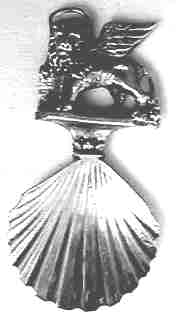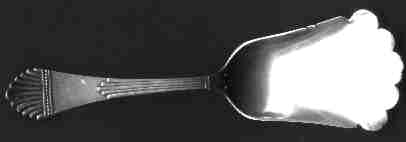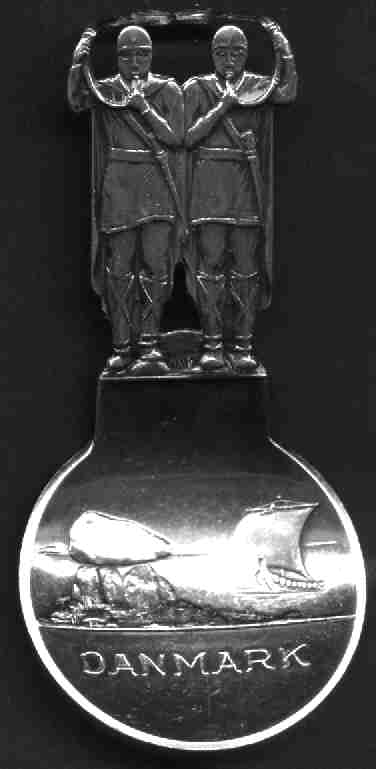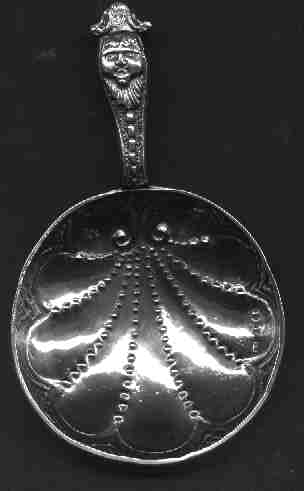Caddy spoons were originally made to measure tea. Around the year 1800, tea was very expensive, and it was kept in locked containers called Caddy boxes, from the Malaysian word "kati" which was a unit of measure. Special spoons were designed to be kept in the Caddy box. These older spoons were quite different from other pieces of flatware which were being produced at that time in history and were made with many different designs. These older pieces have been well documented. Most of the older ones are quite expensive and many now reside in museums although at the time they were cheaply mass produced as compared to other flatware. Sometime in the early 1800's, caddy spoons were given as gifts and were often engraved for a special purpose. In a general way some could be described as among the very first souvenir spoons, but they are not treated by the silver establishment as such.
To my knowledge this is one of the first discussions of souvenir Caddy spoons. These spoons were made to commemorate a place or idea and their purpose was not to measure out tea which was no longer expensive and besides, everyone now uses tea bags. They were also made during the general souvenir spoon movement which swept around the world.
 St . Marks
Lion (Venice), with shell shaped bowl
St . Marks
Lion (Venice), with shell shaped bowl
 Windmill
(Holland) with repousse boat scene
Windmill
(Holland) with repousse boat scene
 Horn(s) of plenty
(Denmark), hand made
Horn(s) of plenty
(Denmark), hand made
 Profile(English
import Marks),could also be a bon-bon spoon
Profile(English
import Marks),could also be a bon-bon spoon
 Danish
"Arts & Crafts"
Danish
"Arts & Crafts"
 Danmark
(Denmark) Caddy spoon
Danmark
(Denmark) Caddy spoon
These two soldiers are playing a musical instrument known as a "lurer". These "bronze age" instruments were cast and fitted together with extreme precision. Information on these instruments has been gleened from "rock paintings" and test. The bowl shows an old viking sailboat and it also shows a rock piled on top of other rocks (similar to Stonehenge). It is marked sterling, but I have not been able to trace the maker mark.

Caddy (bonbon?) with face and hand repousse sun design
This spoon was produced in the Netherlands and is marked as being 930 silver with an export mark. It also contains London import marks for foreign silver dating it to 1892.
A number of caddy spoons are also available in brass, but I don't collect those.
Return to Spoon World Index